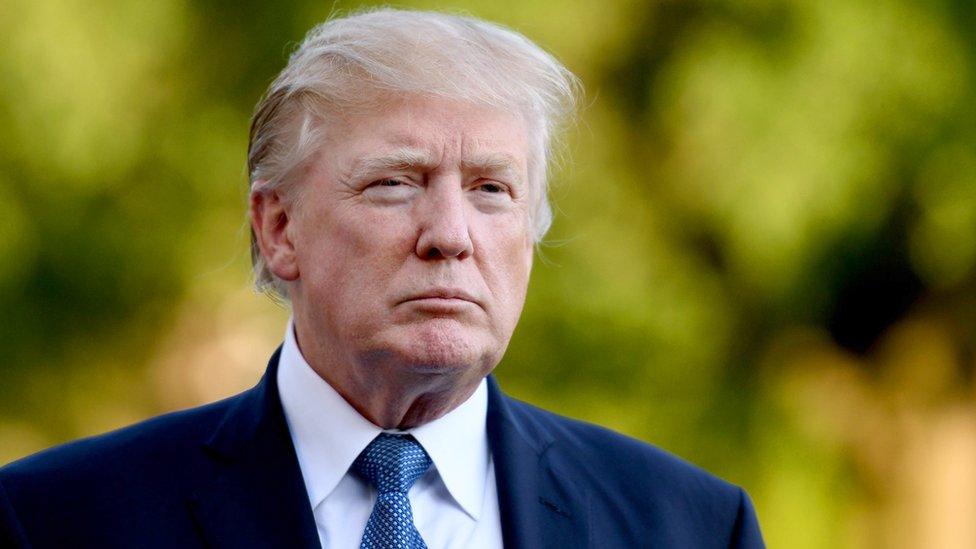Iran: Why is everyone talking about a USA-Iran crisis?
- Published
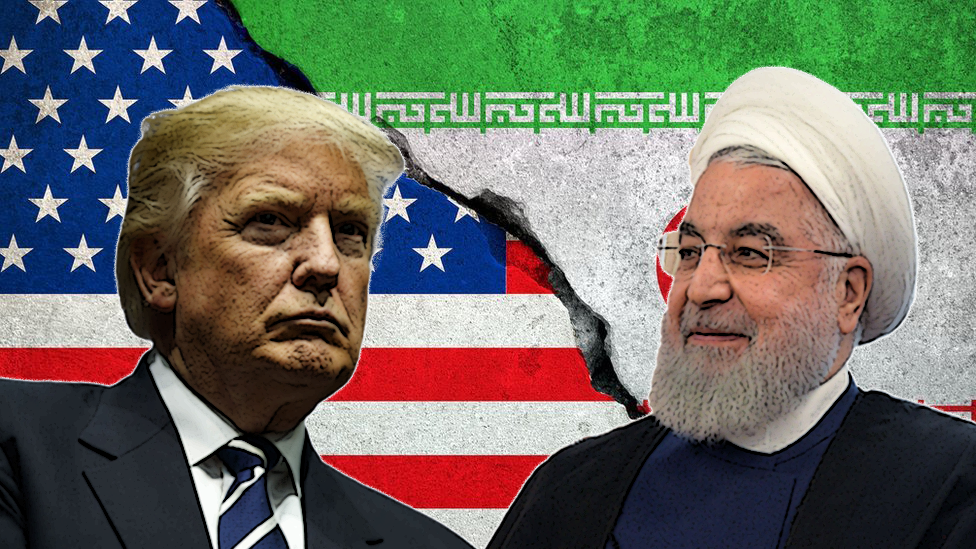
Tensions have continued to rise between the United States and the country of Iran, in the Middle East, following the death of Iran's most powerful military commander.
General Qasem Soleimani was killed by an airstrike ordered by US President Donald Trump on Friday 3 January 2020.
An airstrike is an attack by a military aircraft, in this case a drone, either by bombing or by firing guns.
General Qasem Soleimani was seen as the second most powerful person in Iran, only behind Supreme Leader Ayatollah Ali Khamenei.
Iran responded by attacking two US bases in Iraq.
What has happened between the United States and Iran?
The death of General Qasem Soleimani
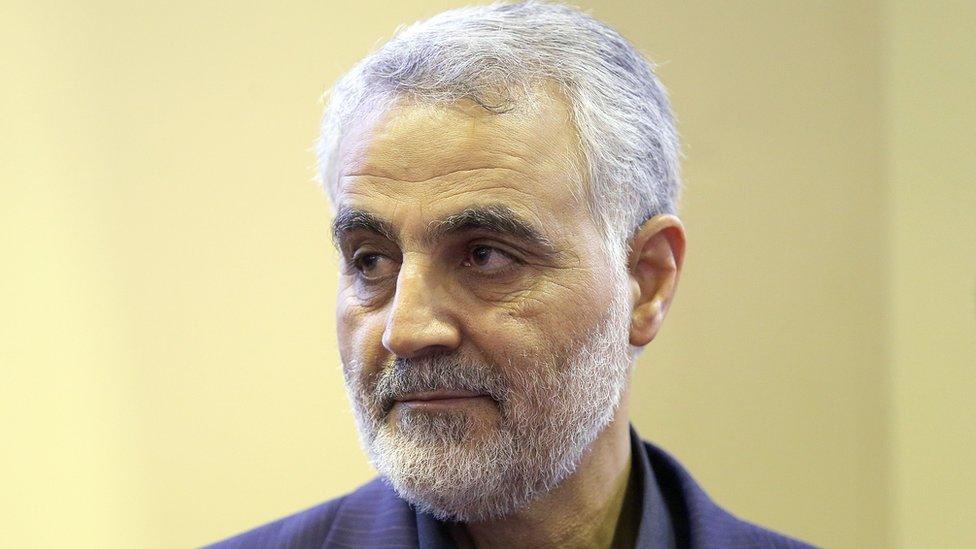
Qasem Soleimani (pictured) was one of the most important figures in Iran.
Qasem Soleimani was in charge of Iran's military in the Middle East.
He had built up pro-Iranian military groups and expanded Iran's military in the Middle East.
He was seen by many in Iran as a national hero and three days of national mourning have been announced by Ayatollah Ali Khamenei.
The US Department of Defence called General Soleimani, and his troops, a "foreign terrorist organization".
They hold Soleimani's troops responsible for the deaths of hundreds of American soldiers.
President Trump tweeted an image of the American flag shortly after the news broke.
How do Iran and the US get on?
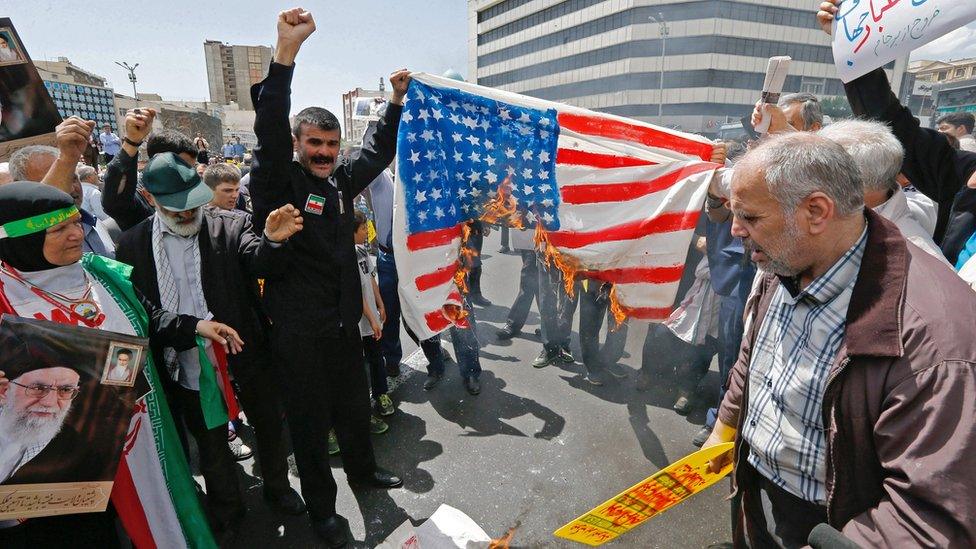
Tensions have been escalating between the two countries
The two countries have had a strained relationship for a number of years but tensions increased after Donald Trump became President in 2017.
In May 2018 he pulled the US out of an important international agreement known as the Iran nuclear deal.
The deal was an agreement between Iran and other major world powers - including the US, UK, France, China, Russia and Germany.
It restricts what Iran is allowed to do with its nuclear programme.
But in return for Iran doing this, major world powers lifted restrictions they had placed on Iran, which were crippling the country and making the cost of living really expensive for ordinary people.
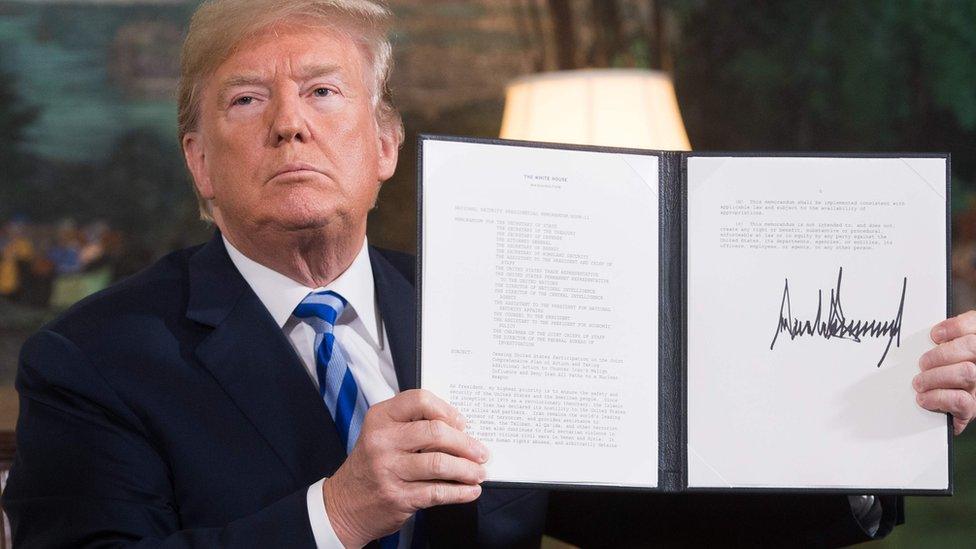
The US - led by President Donald Trump - pulled out of something known as the Iran deal
After the US pulled out of the deal, in November 2018, some of these strict rules were put back in place on Iran and have affected its oil exports.
Even without restrictions placed on the country, life in Iran was difficult for many people and there had been a lot of tension.
In January 2018, thousands of people took to the streets in Iran to protest against the country's government. They were the largest anti-government protests to have taken place in the country since 2009.
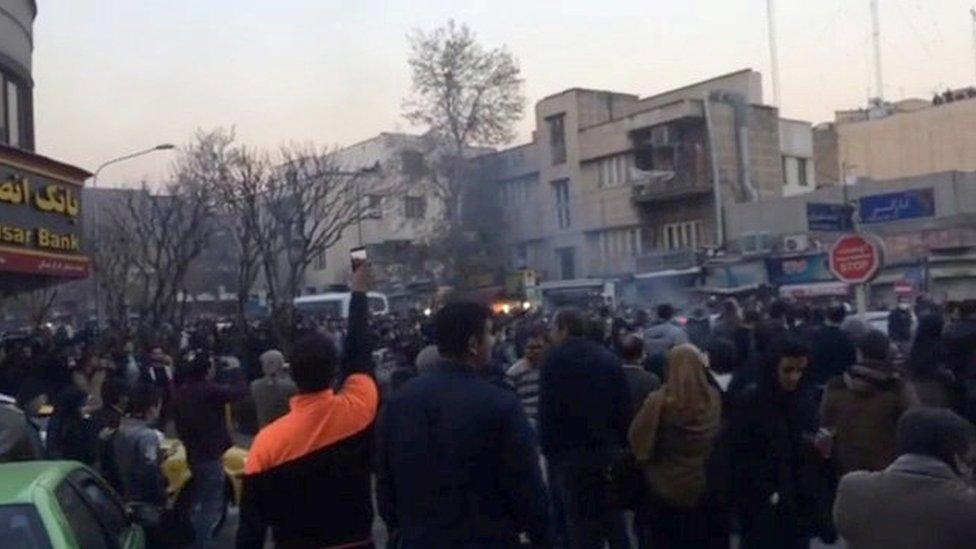
A video sent to a news company is said to show protestors in Tehran, the capital city of Iran
In order to understand why there was unrest in Iran, it is necessary to understand a bit about the country's background and the events that led to that situation.
How is Iran ruled?
Iran is ruled in a different way to many other countries.
It has what is called a theocratic government. Theocratic means a system of government in which religious leaders rule in the name of a god.
Iran is an Islamic republic ruled by religious leaders, who govern according to the laws of Islam.
This has been the case since 1979, when the country's monarchy was overthrown in the Islamic Revolution.
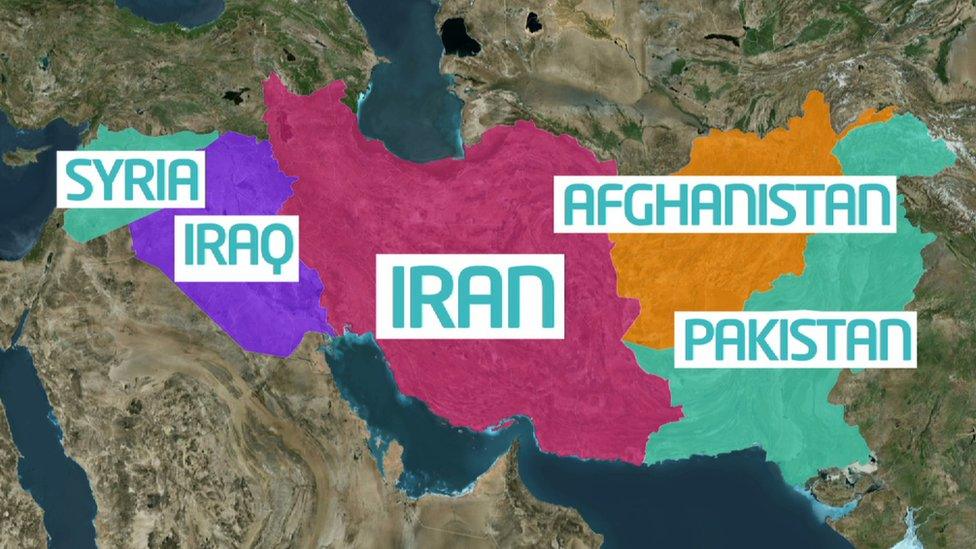
Iran is situated between Syria and Iraq to the west, and Afghanistan and Pakistan to the east
This meant Iran would no longer have a King (known as a Shah), but a Supreme Leader instead, who would be the most powerful person in the country.
In 1979, Ayatollah Khomeini became the Supreme Leader of Iran.
The Supreme Leader has the most power over how the country is run. He is chosen by a group called the Assembly of Experts.
He has control of the armed forces, as well as the security and intelligence services. He chooses the people in charge of the courts, the media, and also six of the 12 members of the Council of Guardians, which is an important group which oversees the Iranian Parliament.
Iran also has a president - the second most powerful person in Iran - who is voted for by the people.
What has happened since?
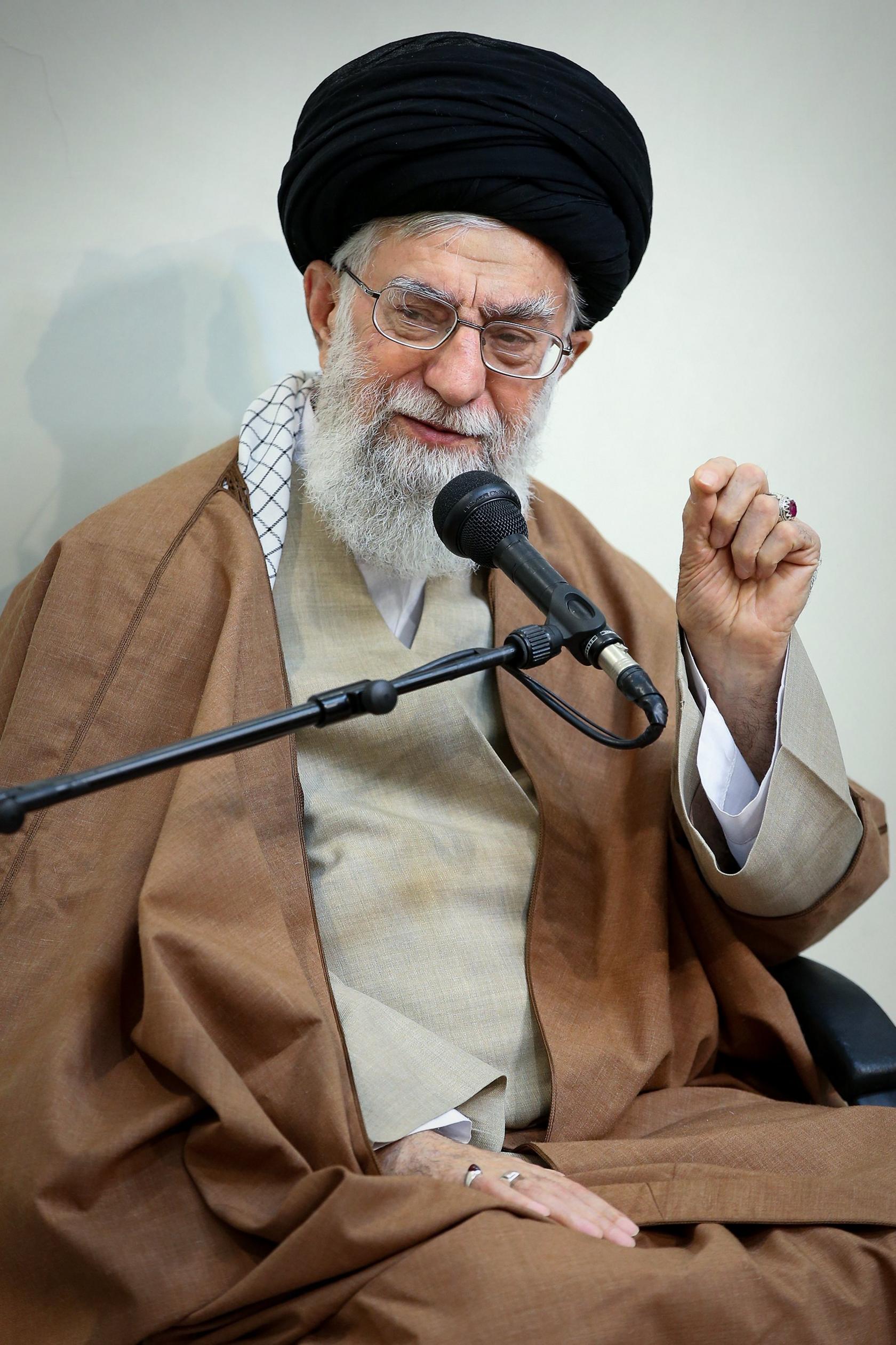
Ayatollah Ali Khamenei is the Supreme Leader of Iran
When Khomeini died 10 years later, the president at the time - a man called Ayatollah Ali Khamenei - was appointed as the new Supreme Leader of Iran. He remains the Supreme Leader to this day, as it is a job that you get for life.
The current president of the country is Hassan Rouhani, who came to power in 2013.
Since becoming president, Rouhani has aimed to build a better economy in Iran and improve its relations with the rest of the world. This earned him a lot of support from the Iranian people and he was re-elected in May 2017.
He followed a man called Mahmoud Ahmadinejad, who was elected president of Iran in 2005. In 2009, he was re-elected, but many people disagreed with the result and said that the election was not run fairly.
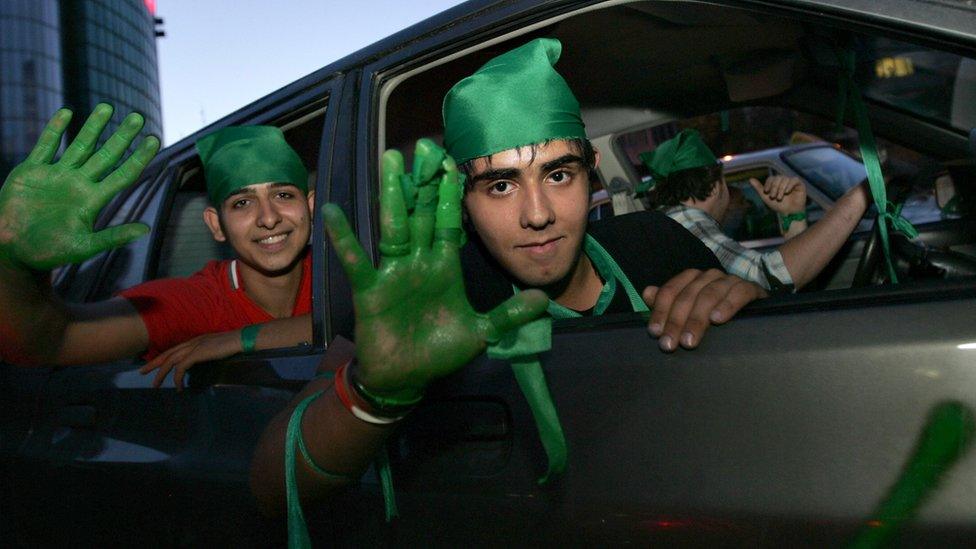
Protestors wore green in the 2009 unrest as part of what was called the Green Movement
An uprising called the Green Movement brought together millions of Iranians who all demanded that the election was re-run. It brought together the biggest crowds since the 1979 Islamic Revolution and caused a lot of unrest.
Despite the protests, Khamenei (the Supreme Leader) insisted the result was valid and Ahmadinejad was sworn in for a second term as president in August of that year.
But when Hassan Rouhani won over half of the votes in the 2013 election, many people hoped that this would bring about the change that the country needed.
Why did Iran need change?
One important event during Rouhani's presidency happened in 2015, when he made the important deal with other major world powers known as the Iran nuclear deal.
At the time, Iran did not have a very good relationship with these other countries because they thought that Iran was working to build a nuclear weapon - even though Iran said its nuclear activities were peaceful.
As a result, the UN, US and several other countries imposed special restrictions on Iran called sanctions, which were designed to damage its economy and put pressure on the country to stop what it was doing with its nuclear programme.
For example, Iran was stopped from selling oil and natural gas to certain countries, which was a big deal because the country made a lot of money from doing this.

This is Iran's president, Hassan Rouhani
Iran lost around £110 billion in money that it could have made from selling oil between 2012 and 2016 alone.
This really damaged the country's economy, making the cost of food and fuel really expensive for ordinary people.
When President Rouhani came to power, one of his main promises was to deal with the damage that these sanctions were doing.
After many years of on-off talks, in 2015 President Rouhani agreed a deal with six major world powers (the US, UK, France, China, Russia and Germany) which saw the sanctions lifted in return for Iran cutting back its nuclear activities.
It was hoped that this would help Iran to rebuild and get the country back on its feet again.
This is the deal from which the US later withdrew, and it meant life in Iran was going to get tough again.
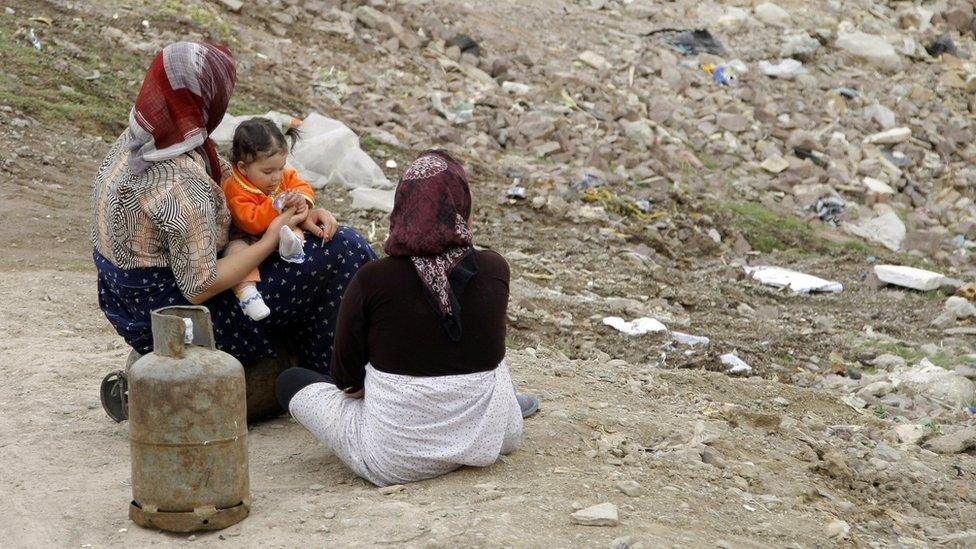
Many ordinary people in Iran have struggled as a result of the country's poor economy
Tankers and tensions
In May 2019, four oil tankers were damaged off the coast of the United Arab Emirates.
The US blamed Iran for that attack, but didn't produce evidence. Iran also denied those accusations.
The following month a US military surveillance drone was shot down by Iranian forces who said it was in their airspace.
The US military insisted that the drone was in international waters at the time and said the attack was unprovoked.
President Donald Trump tweeted: "Iran made a very big mistake!"
He said he was only 10 minutes away from an airstrike but pulled back after being told 150 Iranians would be killed.
Some experts think the explosions were in response to the US rules and restrictions designed to stop other nations from buying Iranian oil.
Since then, the countries have continued to fall out - leading to the death of Qasem Soleimani and Iran's bombing of US bases.
- Published9 May 2018
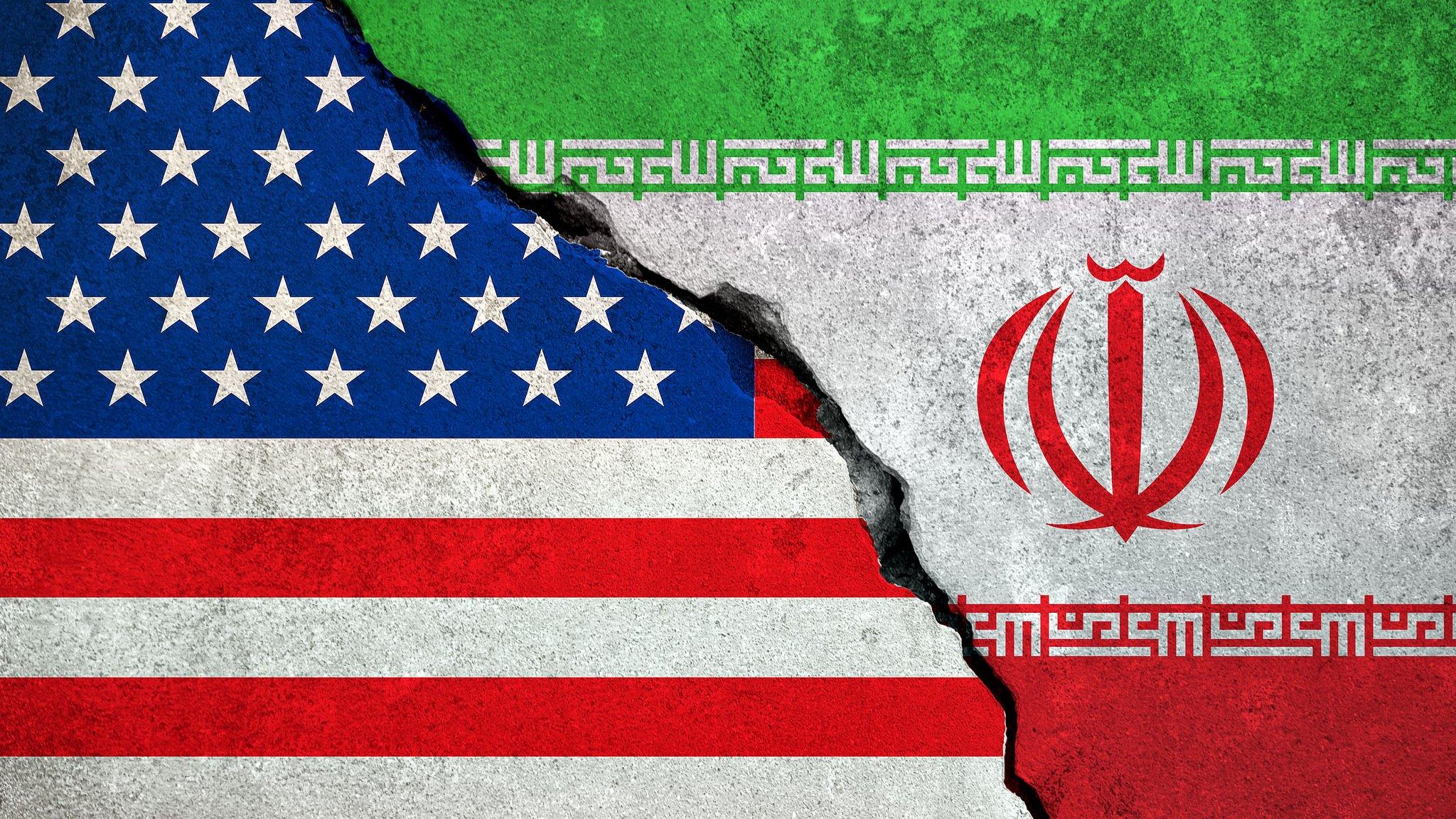
- Published3 January 2018
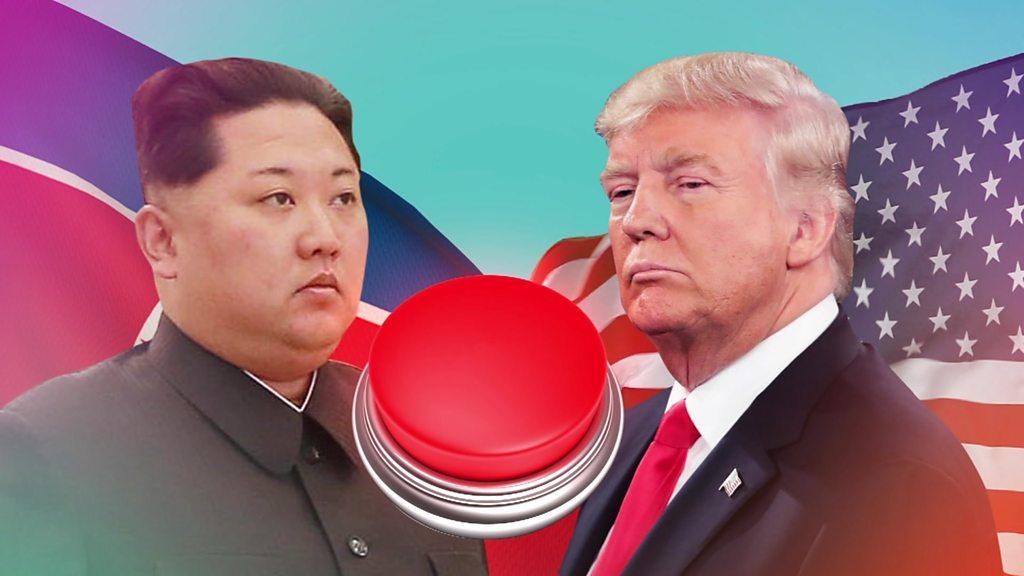
- Published6 December 2017
